The high popularity of reverse osmosis systems makes it imperative to understand each of their particularities. Whether we are thinking about how they work, the variations in their membrane network or even the different treatment steps that allow for different levels of water quality, understanding reverse osmosis systems is essential in the water treatment industry.
In this article, we will discuss in detail the treatment steps of the different types of reverse osmosis depending on the feed water and the targeted water quality.
For more information on reverse osmosis, here are some related articles:
- Reverse Osmosis Explained: Versatility and Efficiency.
- How to Understand the Impact of a Reverse Osmosis System
- How to Reduce the Water Waste of a Reverse Osmosis System?
- How Much to budget for a Purified Water System
The different steps possible
Typically, there are three possible steps in a reverse osmosis treatment system: pretreatment, reverse osmosis & polishing.
Pretreatment is used to prepare the water for the reverse osmosis process. Reverse osmosis is the backbone of the treatment. It removes most of the dissolved matter in the water.
Finally, polishing allows the extraction of residual contaminants in order to produce ultra-pure water for specific applications.
The pretreatment step
Sometimes called prefiltration, pretreatment consists of a step aimed at preparing the water for its passage through the reverse osmosis system. Please note that even though the term "prefiltration" is sometimes used, it is not entirely accurate since the pretreatment step of a reverse osmosis system does not always consist of filtration.
In short, since the pretreatment stage is used to prepare the water for its main treatment, i.e., reverse osmosis, it must remove contaminants that could cause problems or complications.
Generally speaking, there are three types of technologies used for the pre-treatment of reverse osmosis: activated carbon adsorption, ion exchangers or filtration.
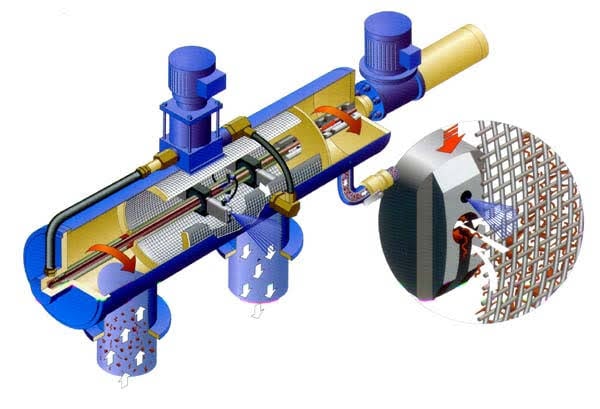 Filtration
Filtration
The addition of a filtration step at the pretreatment stage consists of the installation of filters to remove solids from the water. Filtration is generally installed as a first step when the feed water comes from a source of lesser quality (lake, rivers, etc.). Filtration therefore protects the equipment installed downstream.
How does filtration work?
The principle is simple, a filter or a membrane is installed to act as a physical barrier for the targeted contaminants. Different types of filtration exist, including microfiltration, ultrafiltration and nanofiltration. Depending on the type of filtration chosen, the filter or membrane will allow the passage of certain contaminants and capture others.
Typically, microfiltration has 0.1 micron pores, ultrafiltration has 0.01 micron pores and nanofiltration has 0.001 micron pores.
In fact, there are several different types of filtration technologies offering different micron sizes. These include automatic filters, screen filters, disc filters and many more.
The benefits of installing a filtration stage during pretreatment
Generally, a filtration stage is installed upstream of a reverse osmosis system in order to avoid blockage of the system and the osmotic membranes. As mentioned above, it is normally installed as the first step during a pre-treatment since it not only protects the reverse osmosis, but also protects additional equipment such as activated carbon units or ion exchangers. Typically, the filtration stage removes large solid particles from the water such as suspended solids. In addition to suspended solids, one can also think of organic debris such as algae, branches or small stones.
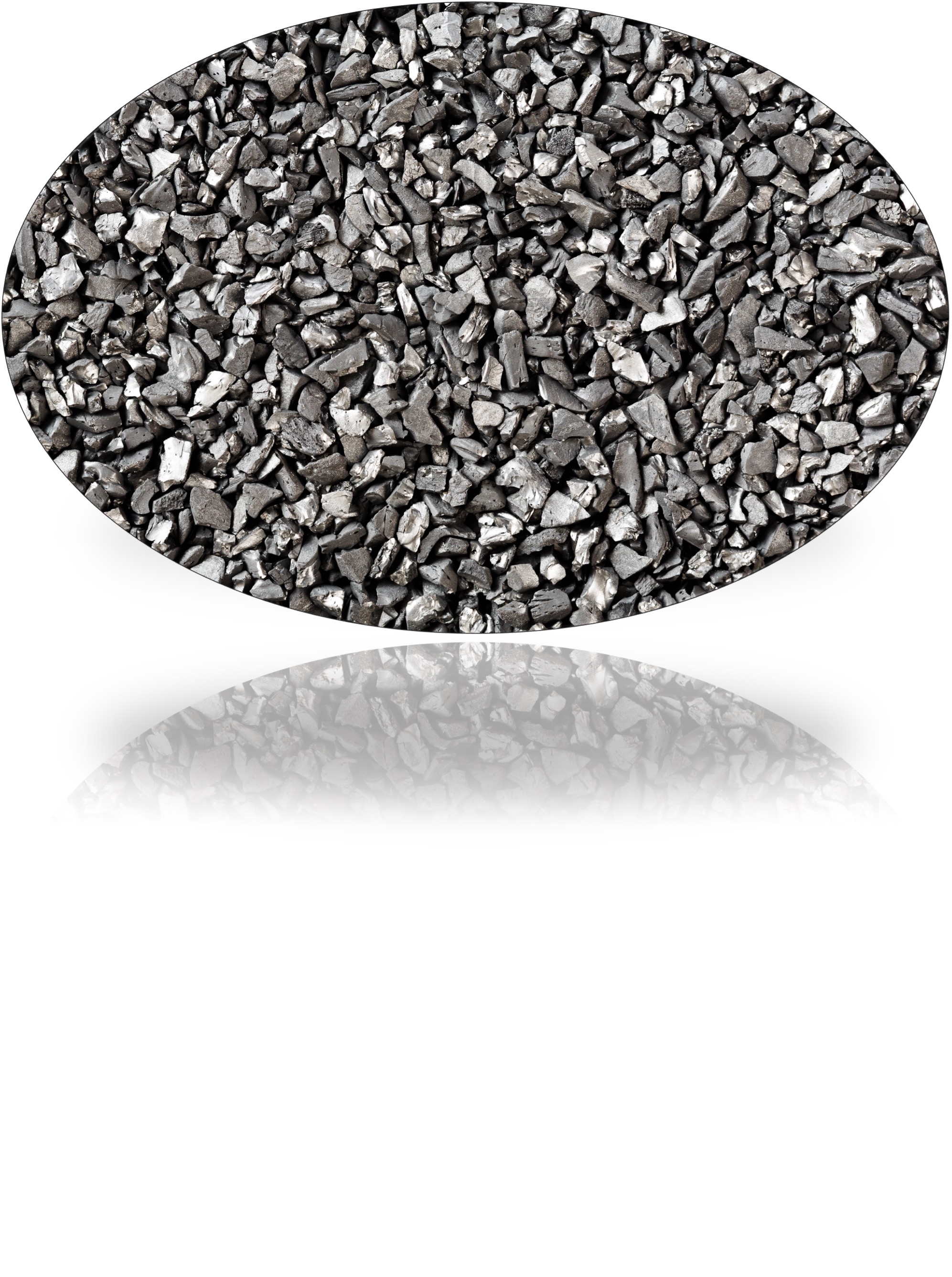 Adsorption With Carbon
Adsorption With Carbon
Activated carbon is a water treatment technique that allows the extraction of certain contaminants, in particular thanks to the adsorbent power of activated carbon. Among the contaminants that can be removed by carbon, we can think of phenols, certain contaminants that can cause odours such as hydrogen sulphide or chlorine and its derivatives.
Most often, the use of activated carbon as a pretreatment for reverse osmosis is justified by the extraction of chlorine or its derivatives such as chloramine. The purpose of removing chlorine and its by-products from water prior to RO treatment is that the oxidizing power of chlorine molecules can affect the integrity of osmotic membranes. To learn more about the impact of chlorine molecules on reverse osmosis membranes, see this article:
How does activated carbon treatment work?
The basic operation of a carbon treatment system is relatively simple. A tank similar to that of a water softener is installed and activated carbon is placed inside.
As the water flows through the carbon bed, the adsorption power of the carbon allows the capture of contaminating molecules. Without going into detail, the adsorption of the carbon comes from the London dispersion force that is created by the movement of electrons during the formation of a temporary dipole. To learn more about the adsorption capacity of carbon, the London Dispersion Force and Van der Waals forces, see this article: How does activated carbon adsorb contaminants?
Activated carbon works a little differently when used for water dechlorination. This is because the chlorine ions do not adhere to the carbon through the dispersive force of London, but rather through the oxidizing power of the chlorine. Specifically, the activated carbon reacts to create catalytic reduction reactions. Without going into too much detail, a reduction reaction, also known as "redox," is a reaction where two phenomena occur simultaneously: oxidation and reduction. In other words, it means that there is an exchange of electrons between the ions.
The Benefits of Carbon Treatment as a Pretreatment
When carbon treatment is deemed necessary during RO pretreatment, it is generally for two reasons. As noted above, carbon is generally used to remove chlorine and its by-products to protect downstream equipment. Although we have only specified reverse osmosis membranes, one can also think of ionic resins that can be used in pretreatment.
In addition to protecting the equipment against the oxidizing power of chlorine, activated carbon will also have a positive impact on the fouling of osmotic membranes and ionic resins downstream of it. In other words, the adsorption capacity of activated carbon reduces the organic contaminants that tend to clog the equipment.
Ion Exchangers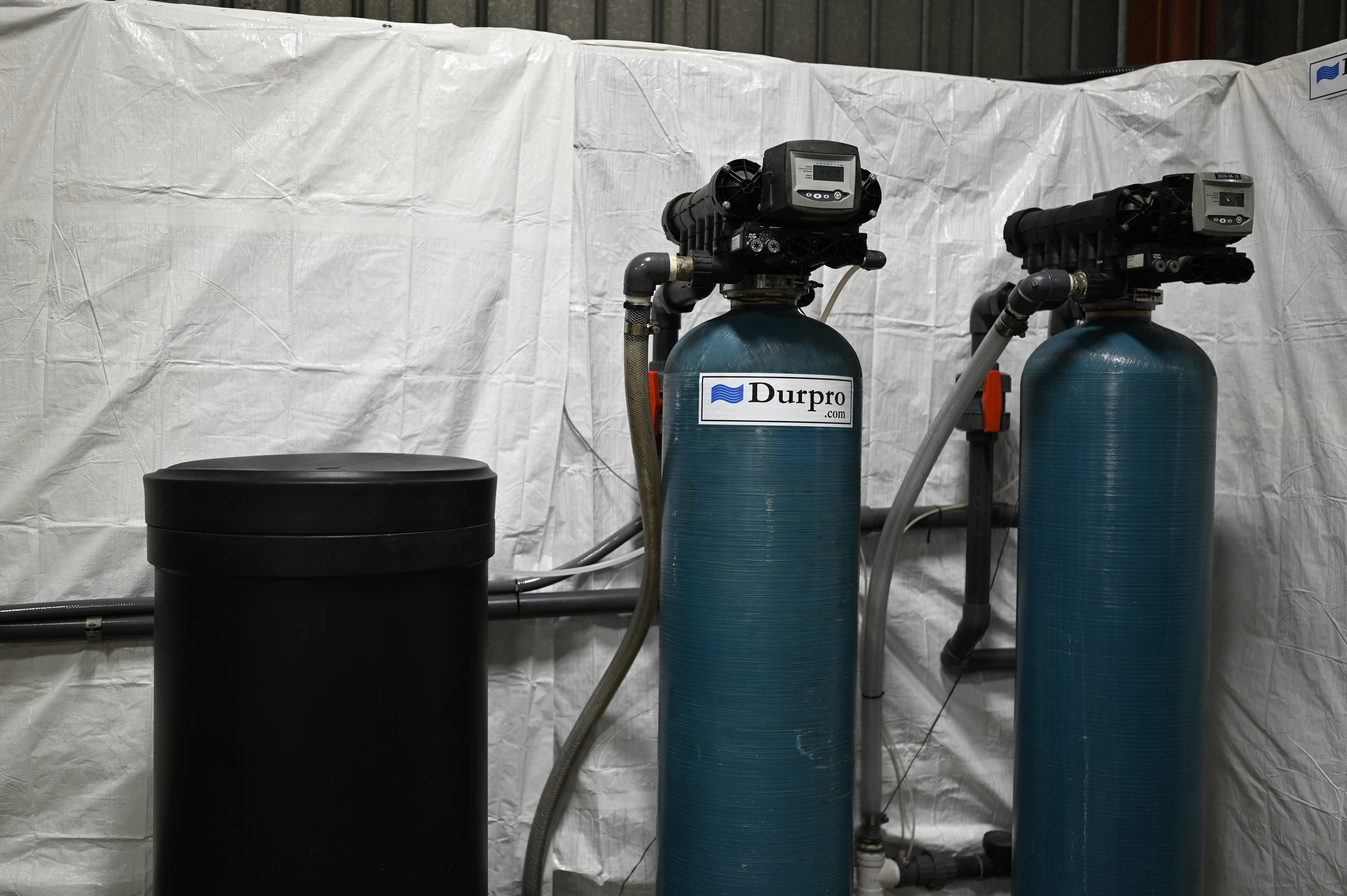
Ion exchange technologies consist of a water treatment step allowing the ionic adjustment of water. Regardless of the type of ion exchanger, they all work thanks to the resin inside them.
- An ion is an atom or molecule that has an electrical charge caused by an imbalance in the number of protons (+) and electrons (-).
How does ion exchange work
This process is carried out thanks to the ionic resins found in the tanks where the water circulates. These resins allow the capture of ions thanks to the radicals found on their surface. In other words, the resins are positively or negatively charged to attract the targeted contaminants.
During their manufacture, resins are assigned a fixed ion that will settle in the polymer backbone used to manufacture the resin. In order to maintain its ionic neutrality, the resin is assigned removable ions of the opposite charge. These ions are found inside the polymeric skeleton and can be extracted, exchanged or removed from the resin. It is thanks to these removable ions that the ionic exchange can take place.
Let's take the example of a cationic resin used in a water softener. For this type of resin, the negative SO3- ion will be on the skeleton. During the first cycle of salt regeneration, Na+ ions will attach to the resin skeleton. When calcium or magnesium, contaminated water circulates in the resin bed, sodium ions (Na+) will be exchanged by them since there is a preference created between magnesium, calcium and SO3- ions.
Since the contaminants that can be found in water are much broader than simple hardness (Mg and Ca), there is a wide variety of resins that allow ion exchange of a variety of ions. Among the technologies used for ion exchange, we find dealkalizers, softeners and demineralizers. In fact, there are different varieties of each of these technologies. To simplify things, remember that ion exchangers can be cationic (which removes cations) or anionic (which removes anions).
The Benefits of an Ion Exchanger During Pretreatment
The addition of an ion exchanger upstream of a reverse osmosis system is generally intended to make the equipment more profitable. This means that an ion exchanger of some kind (softener, dealkalizer, demineralizer) will allow the removal of certain contaminants present in the water that are likely to clog the RO membranes.
Although there are exceptions, when an ion exchanger is added to extend the life of osmotic membranes, the financial impact is seen relatively quickly since the costs associated with ion exchangers versus reverse osmosis are very different.
Reverse Osmosis
Very often at the centre of water treatment systems, reverse osmosis is a water treatment technology that has seen its popularity increase due to its ability to extract dissolved matter from water. Reverse osmosis was first used for water desalination and has spread everywhere.
Today, it is known that they can do much more than simply extracting dissolved salt from water.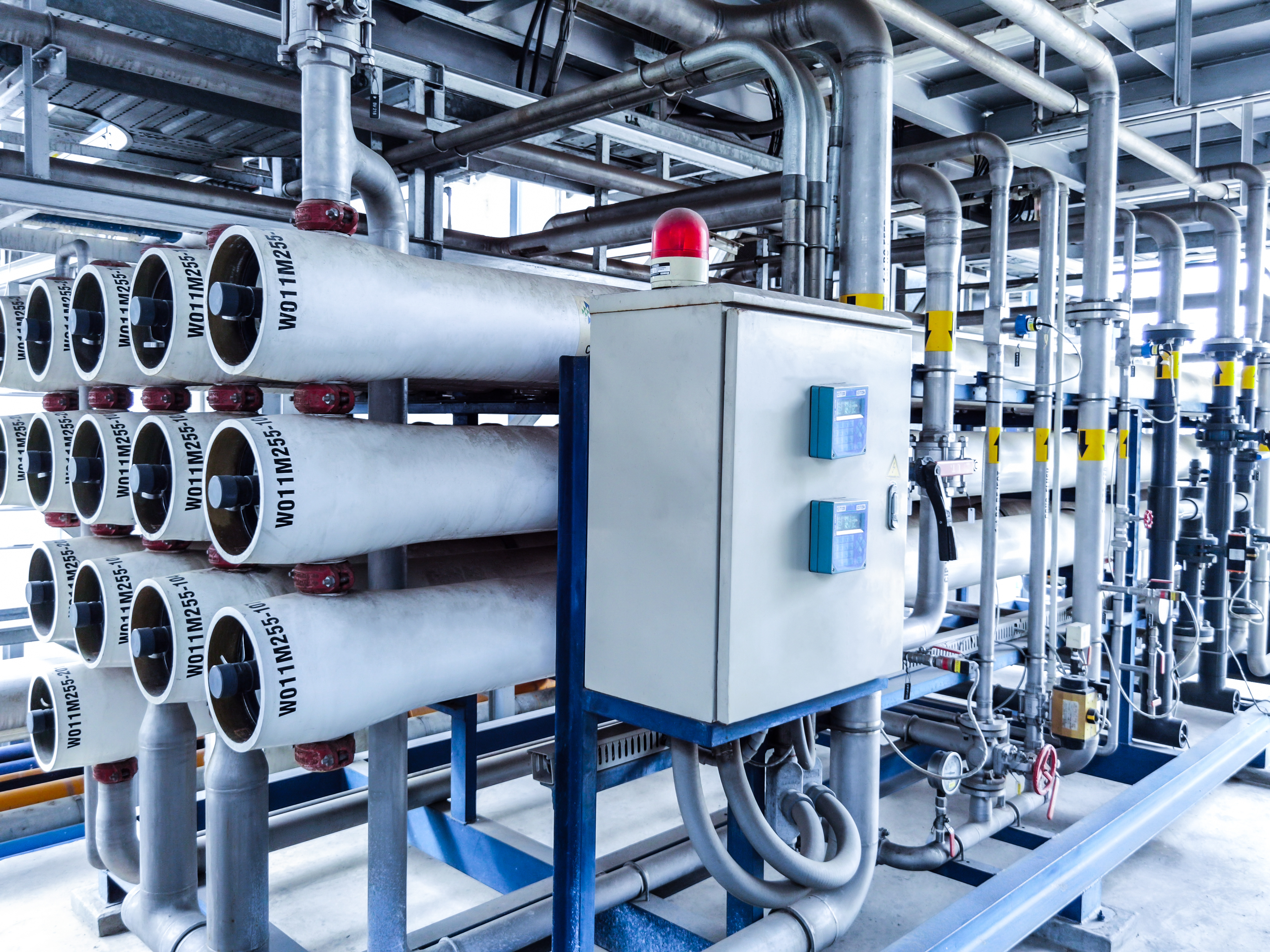
How Does Reverse Osmosis Work?
Similar to filtration, reverse osmosis systems work by using a physical barrier (osmotic membrane) to block unwanted contaminants. Pressure is applied inside the system to allow the fluid to flow tangentially through the membranes.
These systems work mainly because of the osmotic membranes found in them. In a simple and very general way, they are semi-permeable membranes made of polymer and covered with a thin layer of polyamide.
Without going into too much detail, there are "basic" osmotic membranes that only work thanks to pores of about 0.0001 micron in the membrane, but there are also more technological varieties. One can think of ionic osmotic membranes that are loaded with anions or cations in order to offer a selective capture of certain contaminants.
- These membranes are used for the recovery of precious metals such as gold.
What is Reverse Osmosis used for?
As we have seen, the various pretreatment steps allow the extraction of most contaminants such as chlorine, solids, certain ions and even hardness. Reverse osmosis, on the other hand, will extract the dissolved matter in the water. This means that reverse osmosis can remove monovalent or polyvalent ions, some pesticides and much more.
As a small note, to monitor the proper functioning of a reverse osmosis treatment, the conductivity of the water is monitored. This is because the conductivity of the water is caused by the presence of dissolved matter. The more dissolved matter there is in the water, and therefore the more ions, the more conductive the water will be. On average, it can be estimated that the permeate of a reverse osmosis will have a conductivity of about 5 microsiemens.
Some reverse osmosis treatments can achieve a conductivity below 5 microsiemens. This depends on several factors: the feed water, the type of membrane used, the membrane network and the number of passes.
To achieve higher purity than that offered by reverse osmosis, polishing steps must be added.
Polishing Steps
Water polishing is an additional treatment step to produce ultra-pure water. Ultra pure water is used in many sectors such as the production of certain electronic components, hospitals and pharmaceuticals and sometimes in the food sector.
Among the treatments used for water polishing are deionization, UV disinfection or ozonation and a final filtration.
Deionization systems
Also known as "demineralizers," deionization systems are used to remove all ions from water.
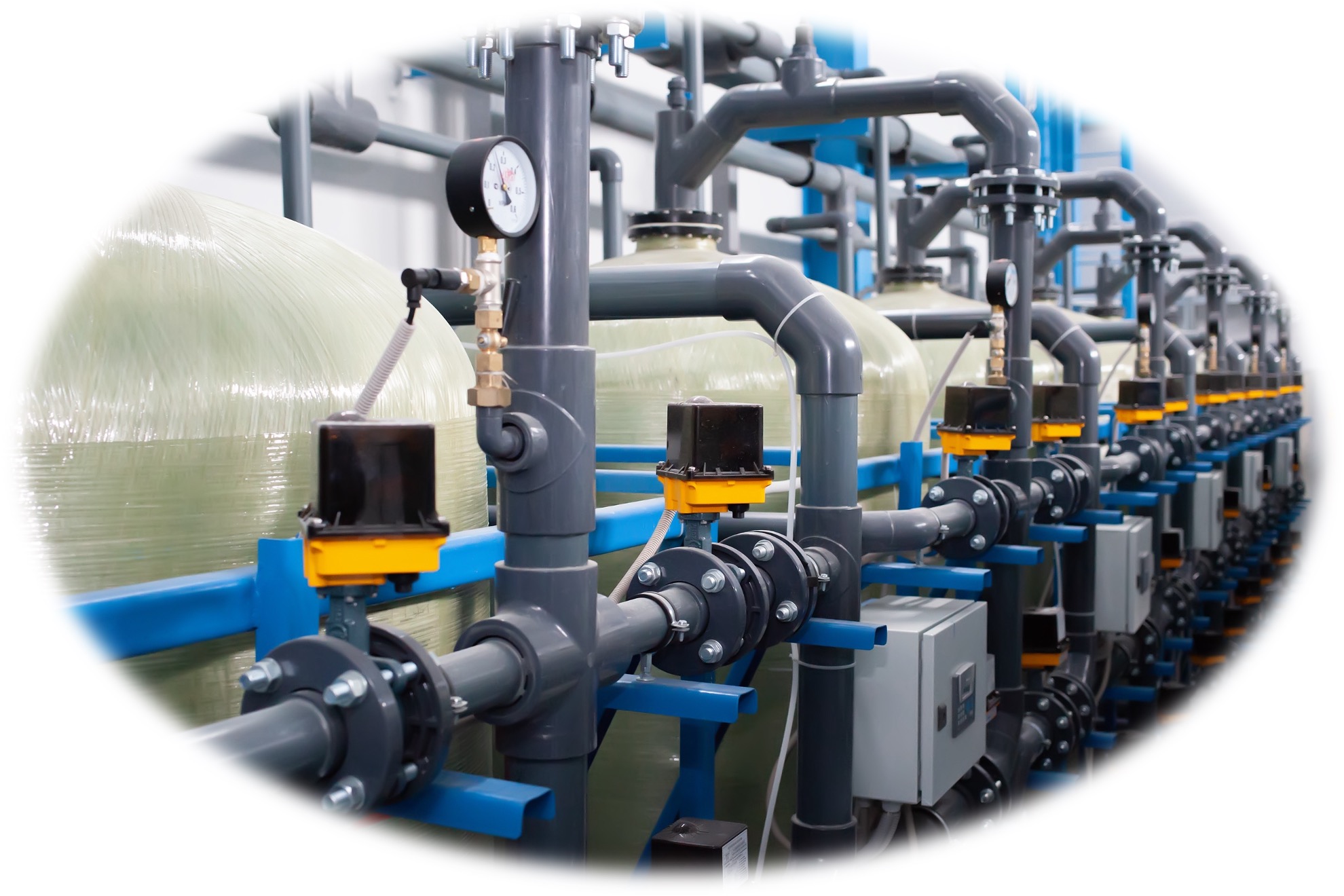
How deionization systems work
As we briefly discussed earlier in this article, demineralization systems are part of the large family of ion exchangers. Therefore, it works on the same principle as the other ion exchangers discussed above.
The difference in deionization systems lies in the resins inside them. As mentioned above, the resins are used to capture the impurities in the water. We have also specified that the resins can be categorized into two main families: cationic resins and anionic resins. The type of resin installed in the ionic exchanger will depend on the type of contaminant that is confronted.
In deionization systems, it is a mixture of the two types of resins that are used. This mixture allows deionization systems to extract both cations and anions. In other words, these systems have the capacity to extract all the ions in the water.
It should be noted that these systems cannot be used to treat excessively contaminated water since the resin, both cationic and anionic, can become clogged and lose its effectiveness. This is why deionization systems are generally used as polishing units since they have the ability to remove recalcitrant residues.
UV Irradiation
Ultraviolet light disinfection is a very popular treatment that works by emitting UV waves (185 nm - 254 nm) that will attack the DNA of organisms in the water.
How UV irradiation works
UV irradiation occurs when treated water passes through a housing where UV lamps emit ultraviolet waves. When these waves come into contact with the organisms in the water, the ultraviolet is absorbed by the DNA bases, which will cause changes in the chemical bonds. These modifications will interfere with the transcription and replication of DNA, which prevents the multiplication of cells.
It should be noted that the effectiveness of ultraviolet treatment is influenced by three main aspects: the quality of the water, the intensity of the lamps and the exposure time.
Uses of UV Irradiation
Effective against bacteria, viruses, spores, cysts and all other types of microorganisms, UV irradiation is generally used for the production of ultra-pure water.
It is also used for the removal of residual ozone following water ozonation or in conjunction with ozone to perform advanced oxidation treatment.
- Find out more about UV irradiation in this article: shedding light on UV disinfection
Ozonation
Ozone disinfection is a chemical disinfection consisting of the addition of ozone to the water to be treated.
 How does ozone disinfection work
How does ozone disinfection work
To begin with, since ozone is a very unstable gas, it cannot be stored. This means that an ozone generator must be installed at the place of use.
In terms of treatment, ozone works much like chlorine, but with an oxidizing power about 3000 times stronger than chlorine. In a simple way, the ozone in the water will attack the contaminants in 4 different ways:
- By direct oxidation ;
- By reaction with radicals;
- By damaging nucleic acids
- By breaking polymer bonds (depolymerization)
Like UV irradiation, ozonation is used for the production of ultra-pure water in specific sectors. Because of the power of ozone, this type of treatment is extremely fast. On the other hand, it can be difficult to dose the right amount of ozone. Therefore, even though O3 decomposes rapidly, a step to remove the ozone residue may be necessary.
Remember that UV Irradiation can be used to remove ozone residues, or both technologies can be used together to perform an advanced oxidation treatment. However, it is important to note that these two technologies can also be used individually.
Final Filtration
The final filtration stage is used when a disinfection stage (UV or Ozone) is used. It is used to remove the residues of micro-organisms that have been "eliminated" by the previous treatment.
How Does the Final Filtration Work
The final filtration step is simply the installation of a filter that acts as a physical barrier to capture the organic "bodies" remaining in the water. To do this, it is sufficient to install a membrane or a filter with pores of 0.2 microns or less.
This step is important to avoid bacteriological recontamination of the permeate.
Recirculation Loop
This treatment "step" is used to keep the permeate in continuous motion to prevent the reformation of contaminants. Indeed, even ultra-pure water can promote the formation of various bacteria when it is stagnant for too long.
Therefore, to avoid problems during use, the water must sometimes be kept in continuous movement within the system. It is at these times that a recirculation loop is installed.
Even if there are several types of circulation loops, their principle and objective remain essentially the same: to keep the water in motion in order to avoid bacterial recontamination.
Complexity of Reverse Osmosis
Whether used to produce drinking water in a mining camp or for parenteral water production, reverse osmosis water treatment systems differ greatly. As you can see, the different treatment steps vary depending on the user's needs and the parameters of the feed water.
It is therefore important to understand that reverse osmosis water treatment systems must be adapted to your needs in order to function properly. Moreover, the right choice of such a system generally allows you not only to reach your water quality objectives on a continuous basis, but also to save money in operational costs.
In short, we hope that this article has answered your questions regarding the different reverse osmosis systems. If you have any questions or concerns, we invite you to visit our FAQ, our blog or to write to us.